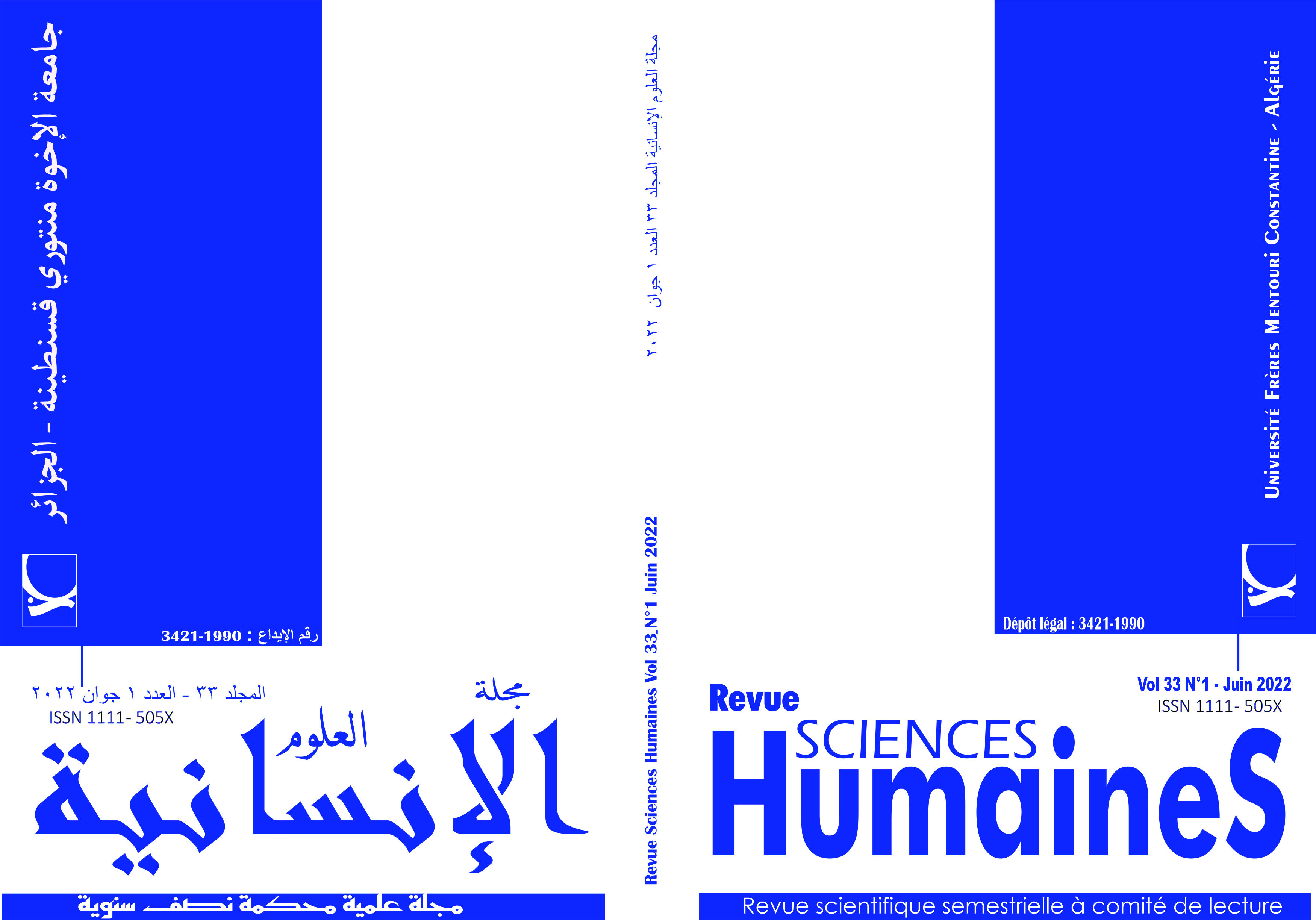The effect of Physical Educational Class in Identifying Physical and Verbal Aggressive Behaviour for the Fourth intermediate Class in the Governorate of Djelfa.
الكلمات المفتاحية:
The Effect، Identifying، Physical and Verbal Aggressiveالملخص
The Object of the study .identify to both physical and verbal aggressive behaviour during the physical educational class, for the Fourth intermediate class students, for this purpose, we used the method Descriptive On a sample composed of 330 students Chosen as sample random, and for data collection, we used a tool questionnaire After collecting the results and having treated them statistically, we conclude 1) Moderate aggressive behaviour both verbally and physically as the percentage of the physical aggression is 2.14 and verbal aggression is 2.13 out of 4 points. 2) There is a correlation between the verbal and physical aggression with a coefficient of 0.74. The study recommends developing and enhancing the physical educational curriculum so as to absorb the students’ potentials and vent them out properly through participations in sports and safe activities, which would allow students to attain emotional.
التنزيلات
المراجع
. Atkinson, Berne & Woodworth, 1987, E, and wood worth ,R.S,1986.Dictionary of psychology ,4th ed Delhi: Goyal Saab publisher .
. Bandura. A.(1973)Aggression :A social learning analysis .Englewood.Cliffs,N):Prentice-Hall.
. Baron, R.A., &Byrne. (1991))Social psychology :Understanding human interaction.Newton,MA:Allyn&Bacon.
. Baron, R. A., & Richardson, D. R. (1994). Perspectives in social psychology. Human agression (2nd ed.). Plenum Press.
. Berkowitz, L.(1965).The concept of aggressive drive: Some additional considerations. IN L.,New York :Atheron press.
. Condry, J.C.,&Ross,D.F.(&ç_().Sex and aggression :The influence of gender label on the perception of aggression in children. Child Development,56,225-233.
. Crick, N. R., & Grotpeter, J. K. (1995). Relational aggression, gender, and social-psychological adjustment. Child Development, 66(3), 710–722.
. Dodge,K.A.(1980).Social cognitive cognition and children’s aggressive behaviour. Child Development,51,162-170.
. Dollard.J.Doob.L.W.Miller.NE, Mower.O.M.,and sears,RP.(1993).frustration and aggression. New Haven .CT: Yale University press.
. Huesman, L. R. & Lefkowitz, M.M. & Walder, L. O. (1984). “Stability of Aggression Over time and Generations”. Developmental Psychology. 20(6). 1120-1134.
. Hurd, N.M. & Zimmerman, M.A. & Reishl, T.M. (2010). “Role model behaviour and youth violence: A Study of positive and negative effects”. The Journal of Early Adolescence. (31). 323-354.
. Kyriakides, L. & Kaloyeros, C. & Lindsay, G. (2006). “An analysis of the Revised Olweus
. Levine, T. R., Beatty, M. J., Limon, S., Hamilton, M. A., Buck, R., & Chory-Assad, R. M. (2004). The dimensionality of the verbal aggressiveness scale. Communication Monographs, 71(3), 245-268. https://doi.org/10.1080/0363452042000299911.
. Olweus, D. & Mattsson, A. & Schalling, D. & Low, H. (1988). “Circulating Testosterone Level and Aggression in Adolescent Male: A Causal Analysis". http://www.policyscience.net/ws/olweus.pdf.
. Shaffer,D.R.(1986).Is mood-induced altruism a form of hedonism ?Humboldt Journal of Social Relations,13,195-216.
. Thierer.(1993).Aggression. In R.N.Singer,M.Murphey,&L.K.Tennant (EDS),Handbook of research on sport psychology (pp.365-377).
. Weinberg, R.S.,&Gould,D.(1995).Foundations of sport and exercise psychology Champaign,IL:Huan Kinestics.
التنزيلات
منشور
إصدار
القسم
الرخصة

هذا العمل مرخص بموجب Creative Commons Attribution-NonCommercial-NoDerivatives 4.0 International License.












